The Basics Of Philodendron Houseplant Care From Master Horticulturist Colin Skelly
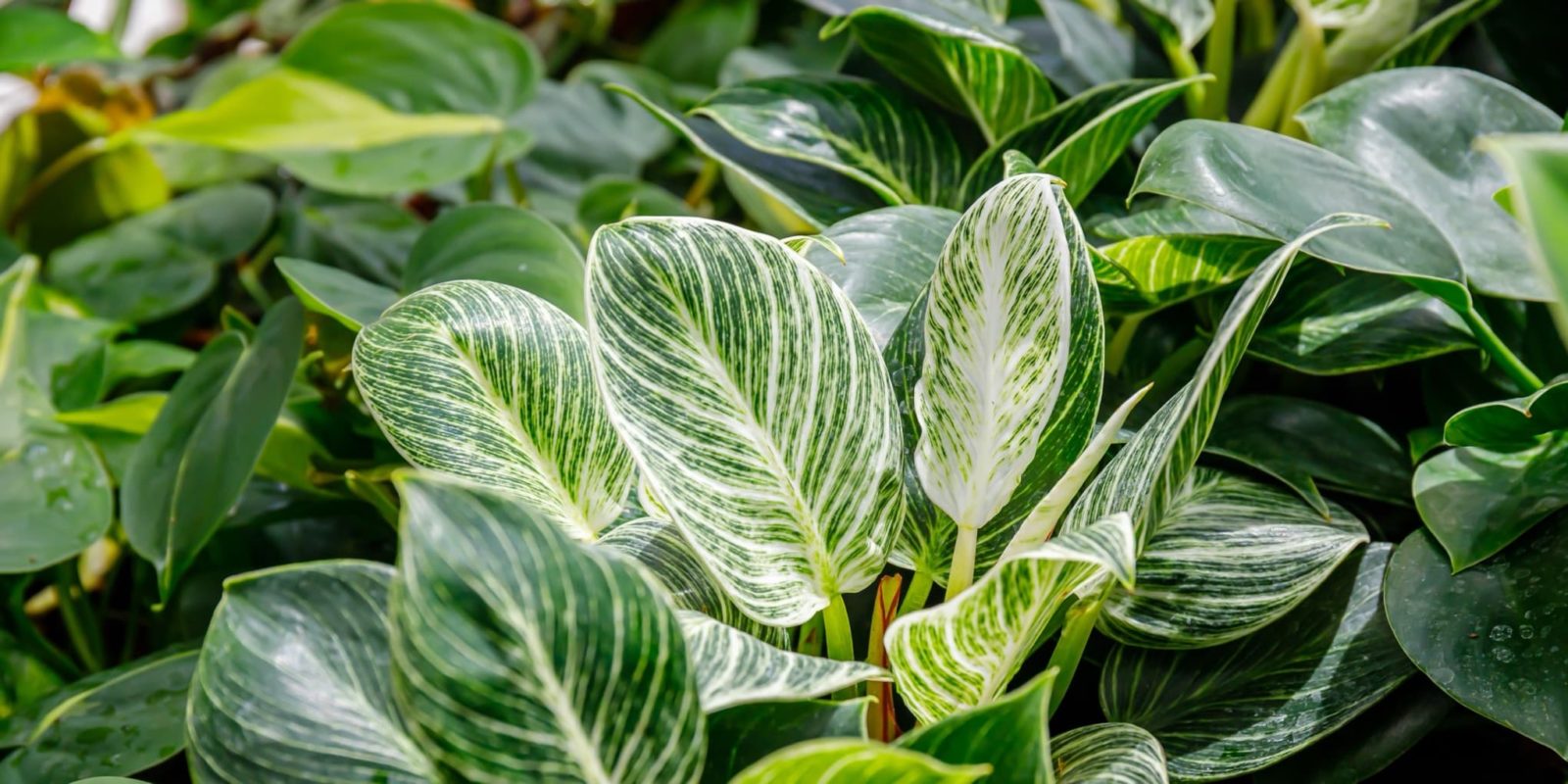
HOUSEPLANTS > PHILODENDRON

Elizabeth is a Permaculture Garden Designer, Sustainability Consultant and Professional Writer, working as an advocate for positive change. She graduated from the University of St. Andrews with an MA in English and Philosophy and obtained a Diploma in Applied Permaculture Design from the Permaculture Association.
Reviewed By COLIN SKELLY

Colin is a Horticulturist and Horticultural Consultant with experience in a range of practical and managerial roles across heritage, commercial and public horticulture. He holds the Royal Horticultural Society’s Master of Horticulture award and has a particular interest in horticultural ecology and naturalistic planting for habitat and climate resilience.
IN THIS GUIDE
PHILODENDRON GUIDES
Philodendrons make exceptional houseplants which are wonderful for even novice gardeners, but there are still certain things you need to know to grow them successfully.
In this guide, you will learn a lot more about philodendron plants and some commonly grown members of this genus.
You’ll also learn how to grow and care for these plants and get the information you need to keep them happy and healthy in your home.
Overview
| Botanical Name | Philodendron |
| Plant Type | Perennial Houseplant |
| Native Area | South and Central America |
| Hardiness Rating | H1B/H2 |
| Foliage | Evergreen |
| Flowers | Tiny flowers |
| When To Plant | March-May (but can be grown year-round) |
| When To Prune | March-September |
Sunlight
Preferred
Partial Shade
Exposure
Sheltered
Size
Height
0.1 – 1M
Spread
0.5 – 2M
Bloom Time
Summer
Soil
Preferred
Loam-based potting mix
Moisture
Moist but free-draining
pH
Any
Philodendron is a large genus within the Araceae plant family.1Loss-Oliveira, L., Sakuragui, C. M., De Lourdes Soares, M., & Schrago, C. G. (2016). Evolution of Philodendron (Araceae) species in Neotropical biomes. PeerJ, 4, e1744. https://doi.org/10.7717/peerj.1744
There are approaching 600 different species within this genus, but the best-known species are those which are commonly grown as houseplants in the UK and other temperate regions.2Philodendron. (n.d.). Plants of the World Online. Retrieved July 18, 2023, from https://powo.science.kew.org/taxon/urn:lsid:ipni.org:names:326132-2#children
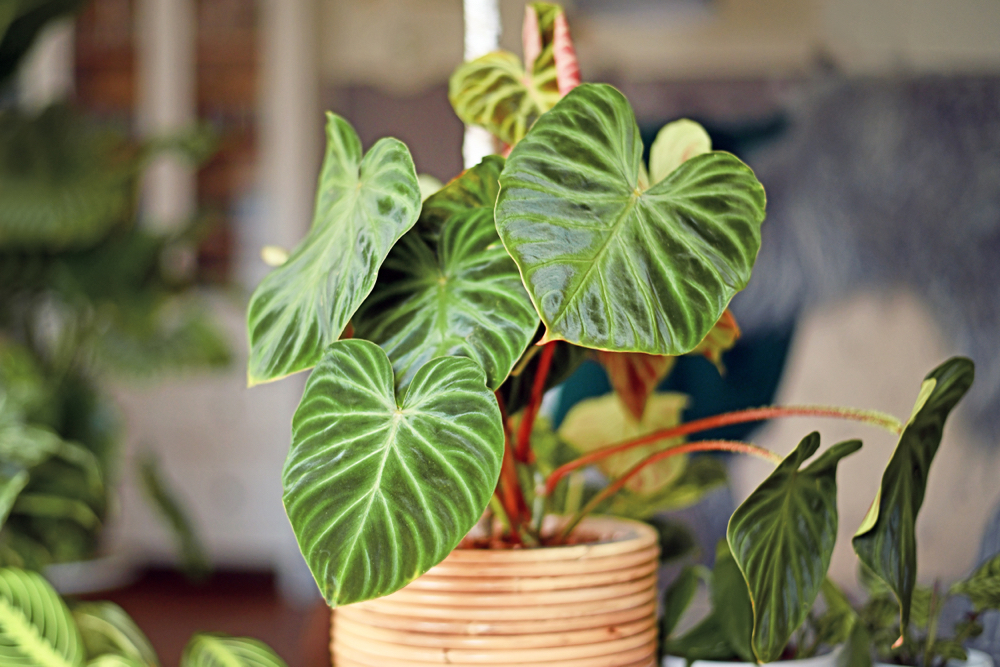
These plants can have a range of different growth habits, but those grown as houseplants can usually be divided into two categories – climbers or vines, and non-climbing types.
Both types are prized as foliage plants, with glossy green leaves which can add an exotic touch to your home without a lot of effort.
“Philodendron is one of my favourite houseplant genera,” says Master Horticulturist Colin Skelly.
“They are very easy to grow and provide a real exotic flavour. The options for upright, climbing or trailing species also provide a great many choices.
“I like to grow mine with ferns as I love the contrast of leaf textures.”
Common Varieties
The most commonly grown species of philodendron grown as houseplants are:
P. scandens
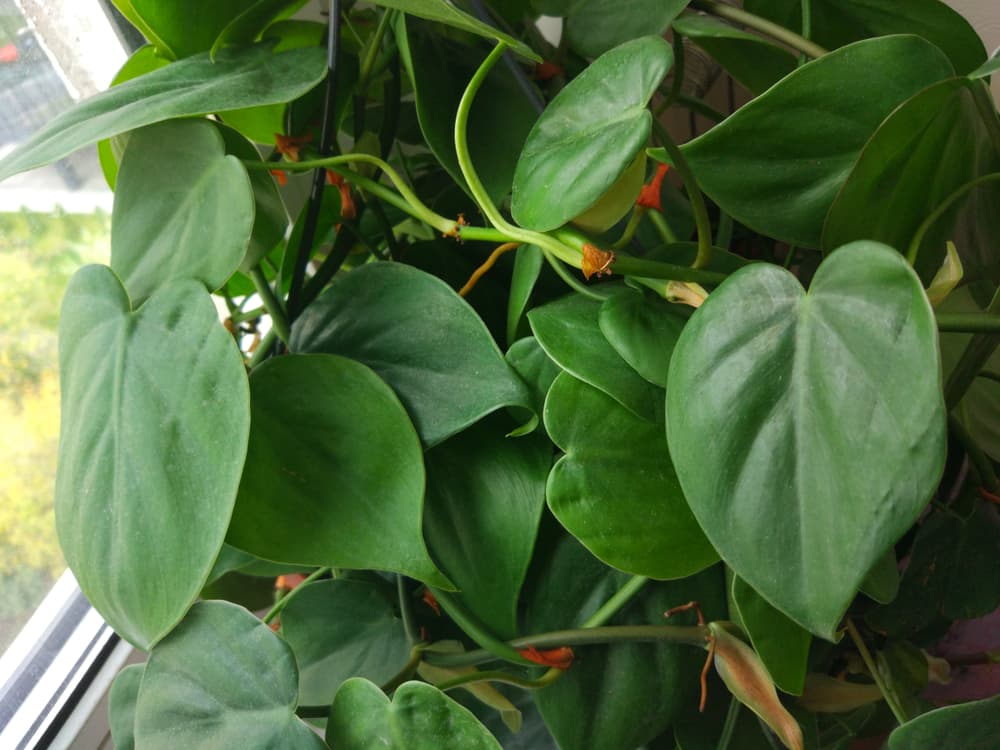
P. bipinnatifidum
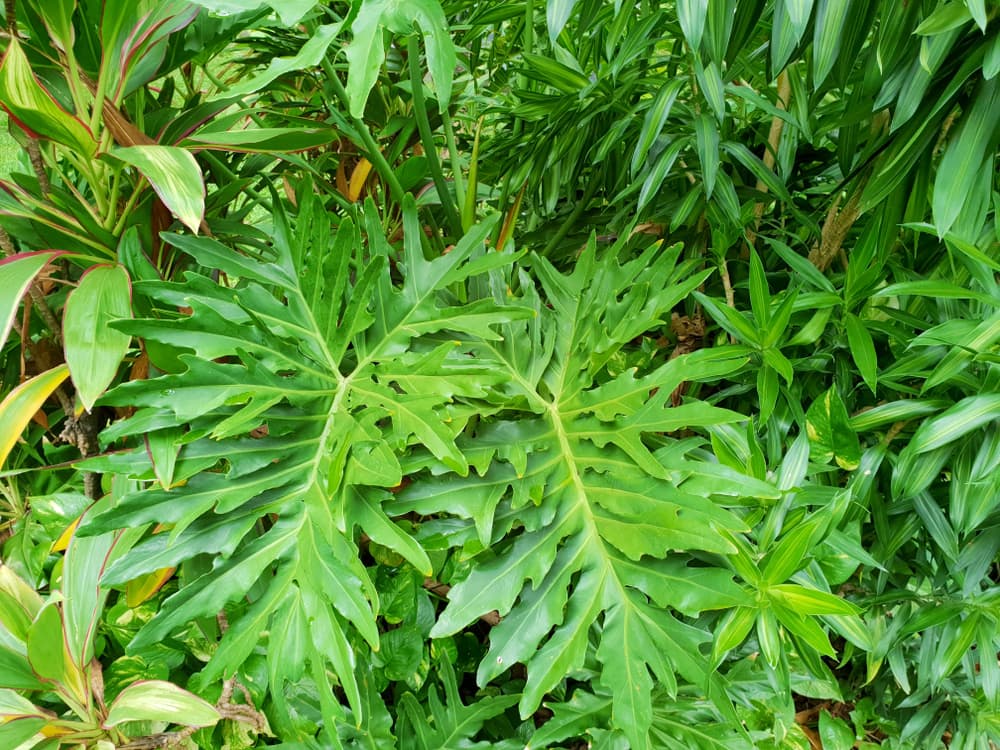
P. erubescens
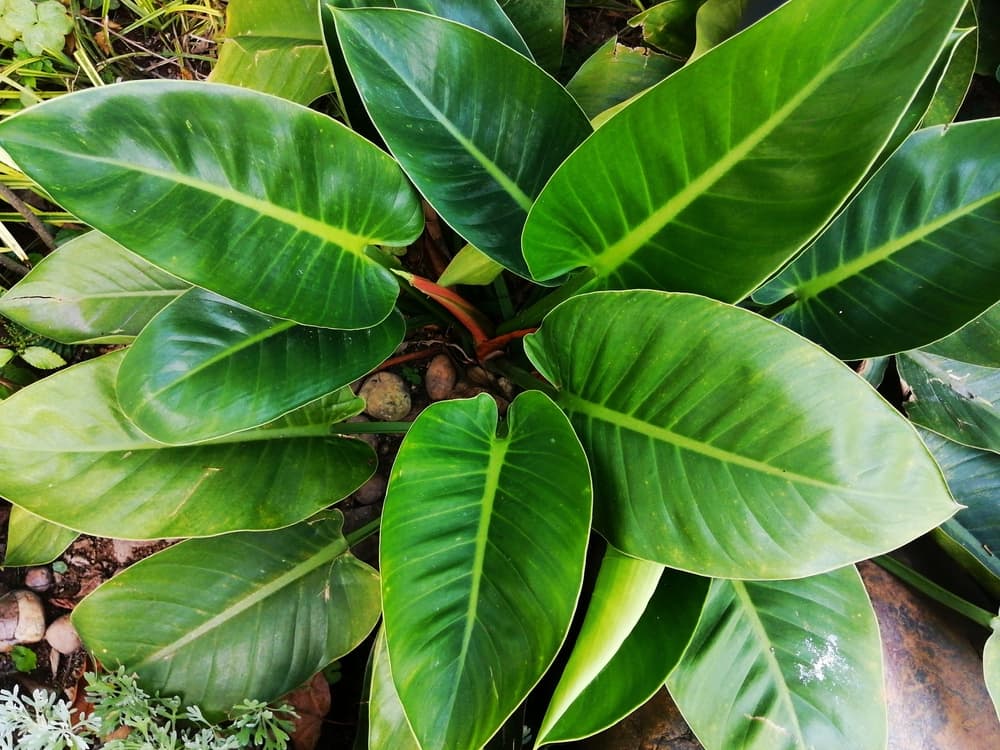
P. melanochrysum
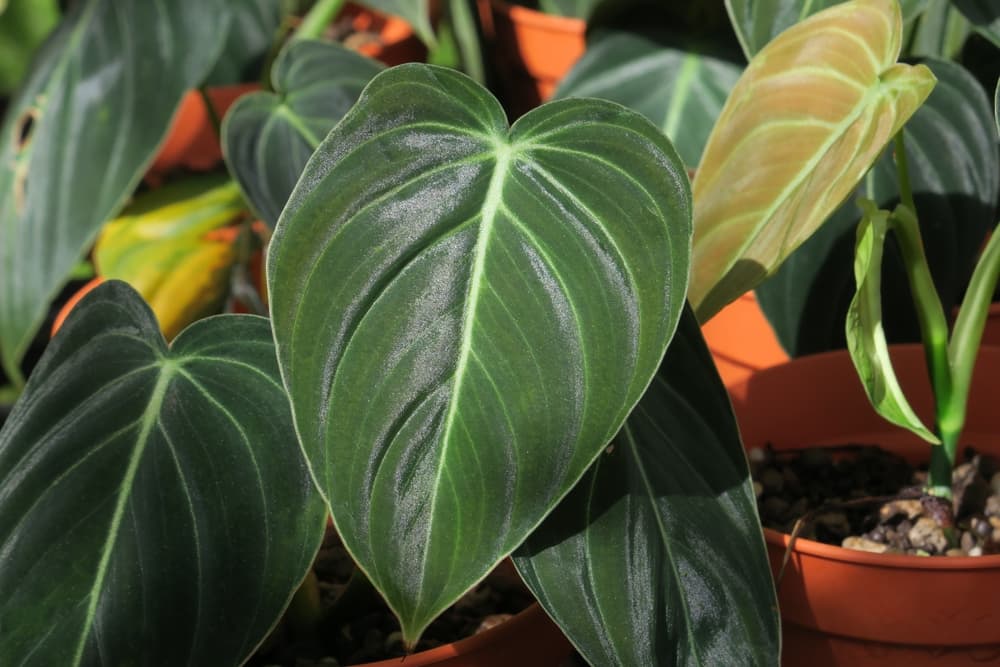
P. ‘Congo Rojo’
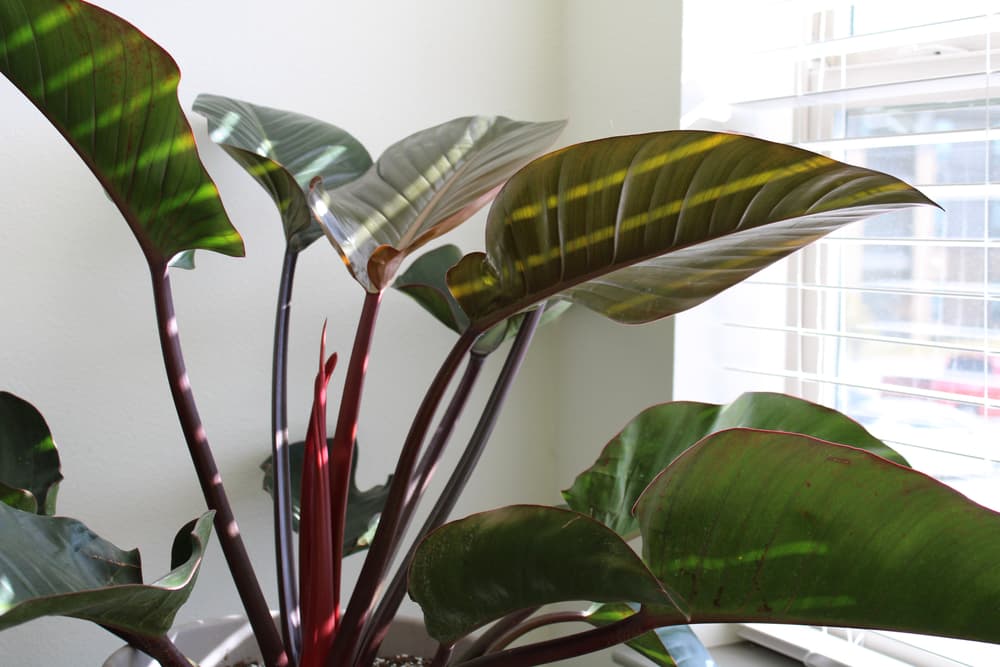
Is My Plant A Pothos Or A Philodendron?
Philodendron scandens is arguably the most popular of the above.
This plant is sometimes confused with another very popular houseplant – Pothos, or ‘Devil’s Ivy’.
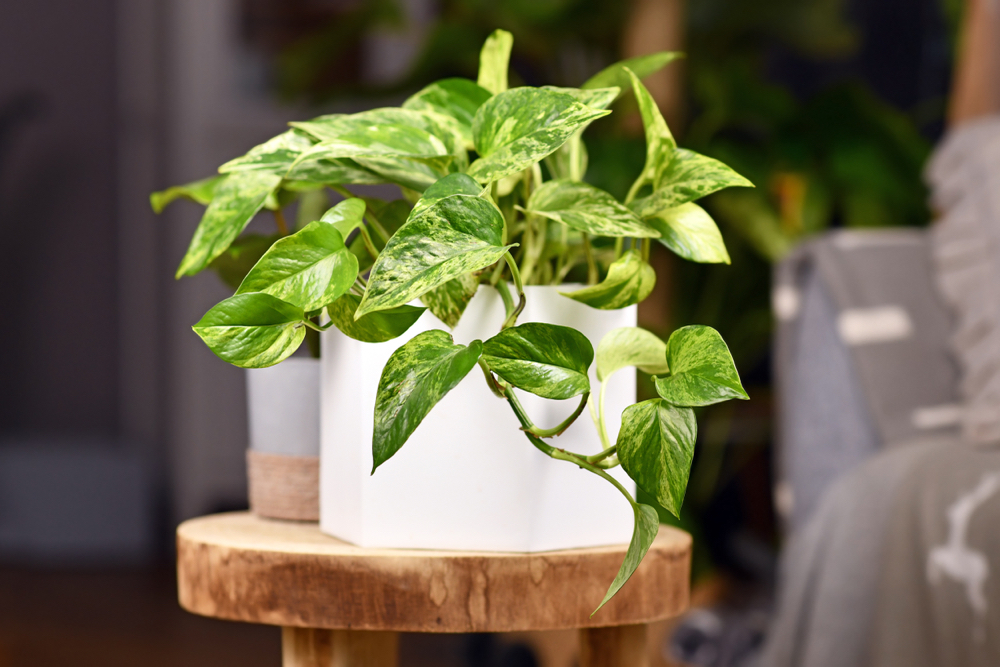
Here are some ways to tell these two plants apart:
- The leaves on philodendron have more heart-shaped and thinner, softer leaves, while pothos leaves are thicker and have a more waxy texture.
- Both plants have aerial roots, but pothos only has one aerial root per node, while philodendron can have several.
- The petioles (small stems that join the leaves to the main stems) on philodendron are thinner than those of pothos, and their petioles are fully rounded rather than indented towards the stem they connect with.
Growing From Seed
Philodendrons are usually purchased as houseplants, or propagated by means of cuttings.
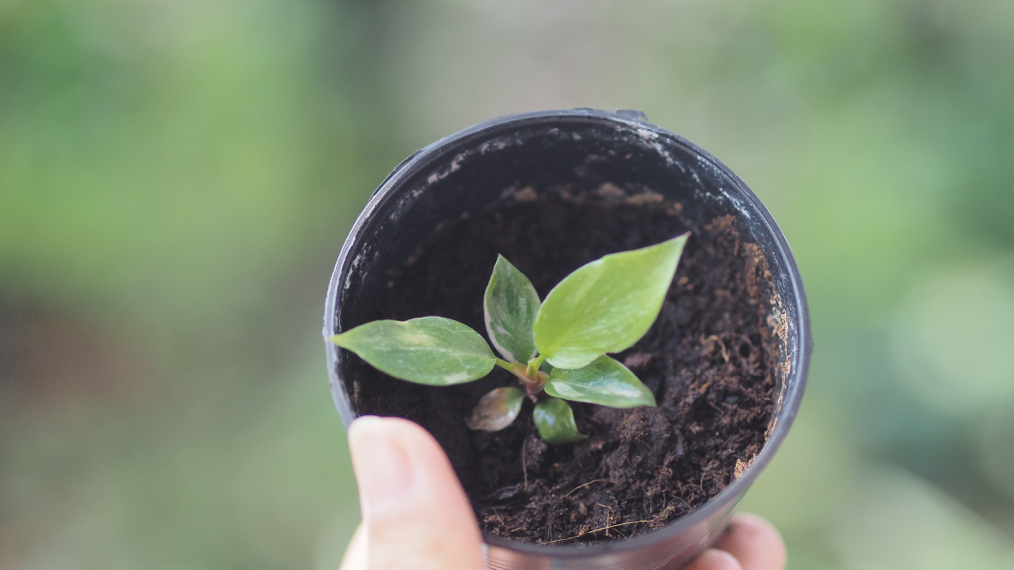
It is possible to grow philodendrons from seed, though this is a very slow process and not usually something recommended for novice gardeners.
If you do decide to give it a go:
- Sow seeds around 1cm deep, at a spacing of around 5cm.
- Place a seed tray or small pots in a lidded propagator, removing the lid occasionally to allow ventilation.
- Soil temperatures between 20-23°C degrees as required.
- Keep the growing medium moist.
- Seeds should germinate in around 2-8 weeks time.
Ongoing Plant Care
Fortunately, you do not have to go to the trouble of propagating these houseplants from seed.
These are frequently offered for sale and you can simply buy one to grow inside your home.
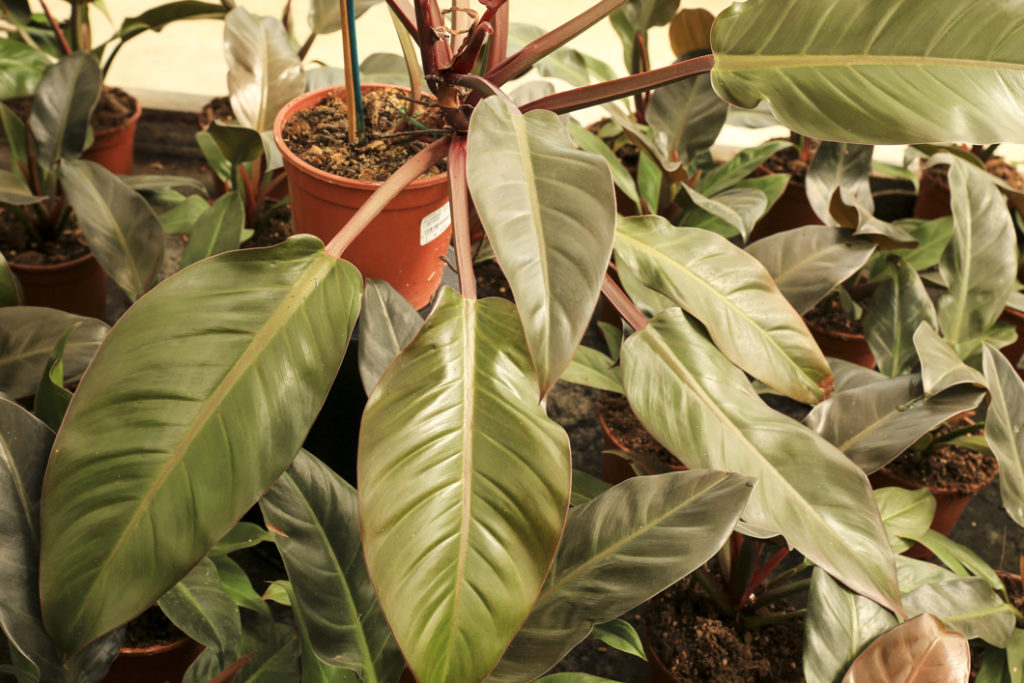
Picking up a philodendron can be a great choice for those new to growing houseplants since these plants are very easy to care for.
The most important thing is making sure that the environmental conditions are right.
Here’s what you need to know to create a good home for your philodendron:
Light
In their native habitat, philodendrons grow in the dappled shade under the canopy of a tropical forest.
They grow best in a relatively bright spot out of direct light, but they can also cope with lower light conditions.
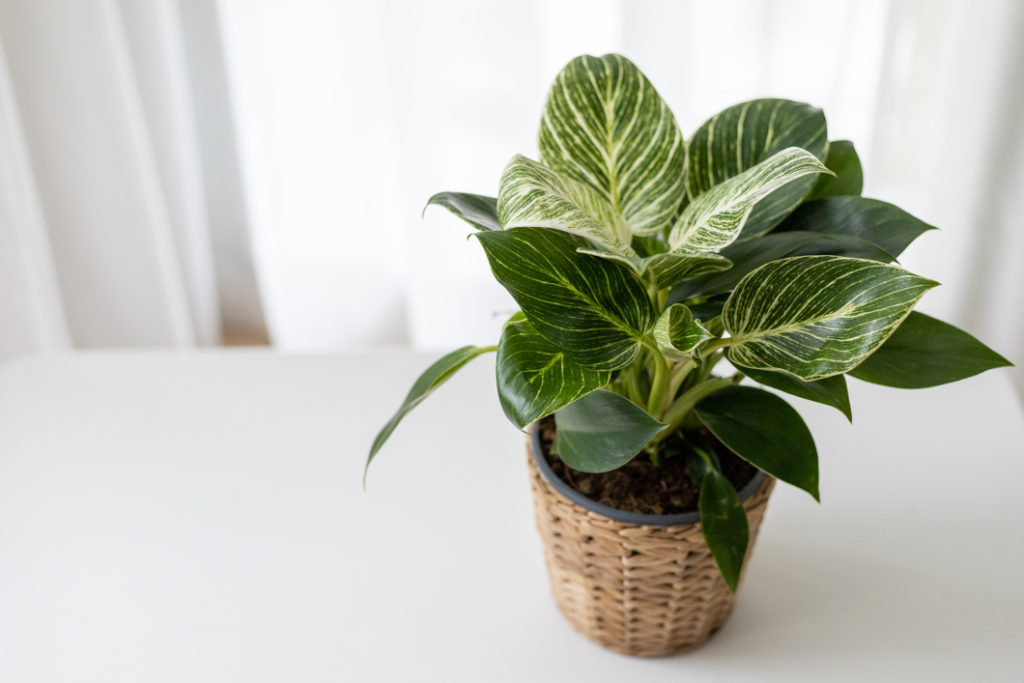
In lower light conditions, these plants can still survive but can become leggy, with lots of space between the leaves.
Too much direct sunlight can cause yellowing leaves and sun damage.
Soil Requirements
A loam-based peat-free potting mix is ideal for growing philodendron plants.
They like a rich and fertile medium, with plenty of organic matter.
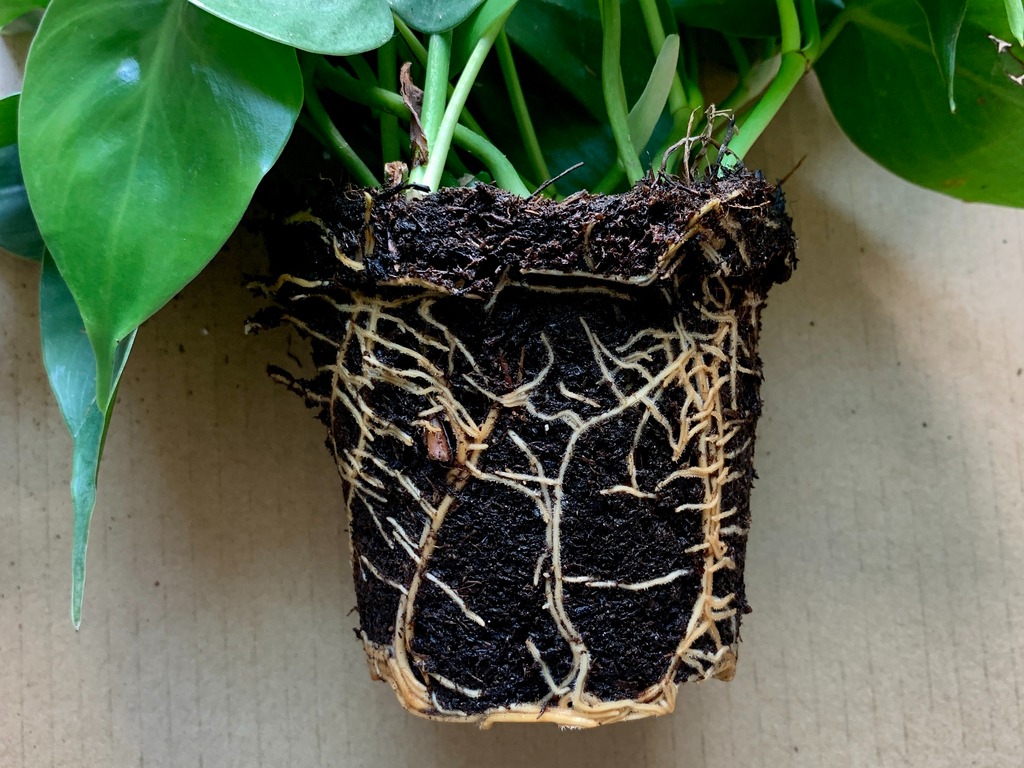
The medium should be moist, yet free-draining.
It is best to replace the soil in your container every couple of years, both to maintain fertility and because salts can build up in the medium from watering, and philodendrons can be sensitive to this.
Watering
Philodendrons like moderate soil moisture.
Leaves can wilt both with too little water and too much.
Always use rainwater where possible.
You can aim for the ‘goldilocks zone’ and get things just right by inserting a finger into the top of the soil, and watering again when the top 2cm or so of the medium feels dry.
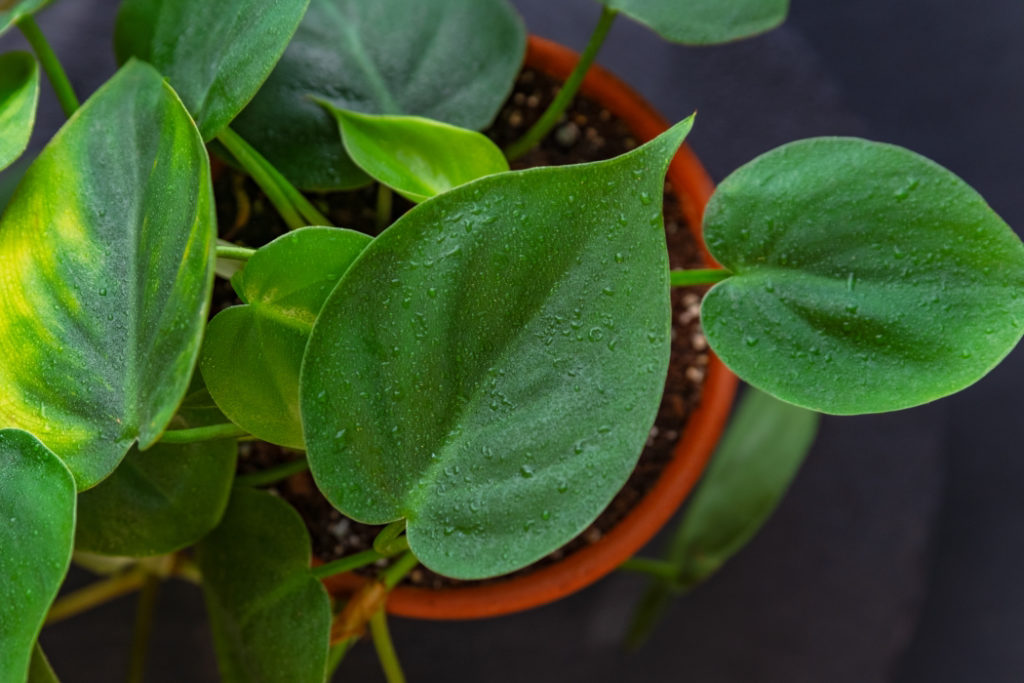
Make sure drainage is sufficient as philodendrons don’t like sitting in waterlogged conditions.
If you bottom water, you should flush through the medium by watering from above every now and then to reduce salts.
Remember that water needs will vary based on where a plant is placed, the time of year, and also on which specific variety you are growing.
Climbing types tend to be a little less drought tolerant than non-climbing types, and plants will need far less water in winter.
Temperature & Humidity
Some philodendrons are more tolerant of lower temperatures than others.
Most should not be exposed to temperatures below 12°C.

Ideally, philodendrons should be placed somewhere with moderately high humidity.
If the air in your home is rather dry, it is best to mist the plant every few days.
Feeding
A philodendron grown in a suitably rich growing medium may not require additional fertilisation at all, but if the plant seems lacking in vigour, you can feed it with a weak, balanced organic liquid feed once a month during the active growth period.
Pruning
You can quite safely remove any naturally yellowing leaves or lightly trim weak growth at any time of the year.
If you wish to remove more of a leggy vine, it is best to prune in spring or summer.
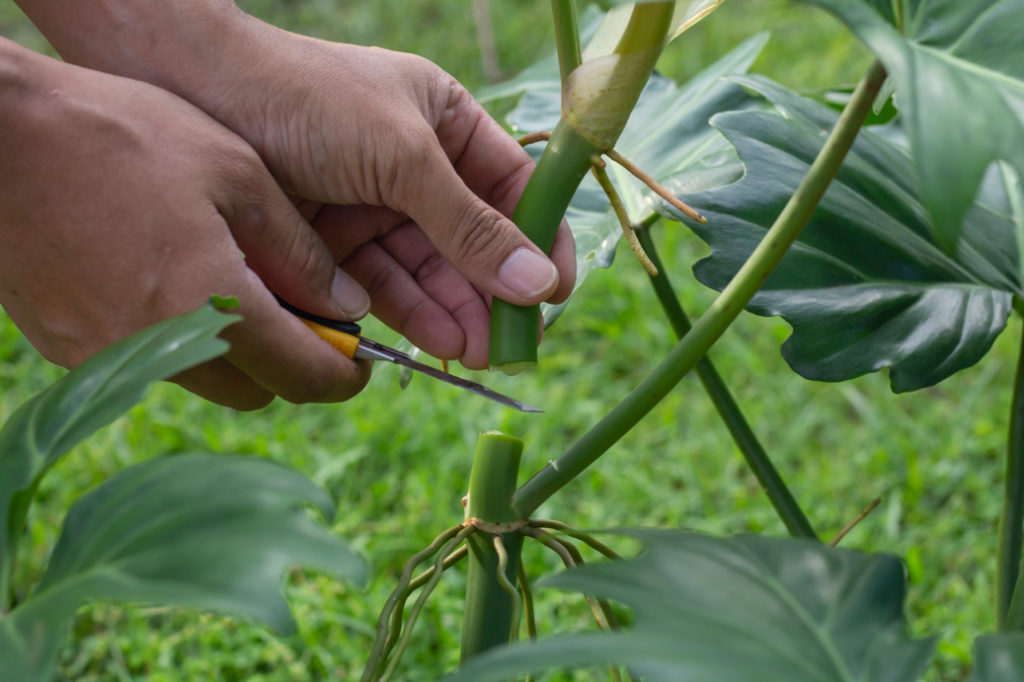
Cut just above a node and remember that pruned material might be used for propagation (see below).
Often, however, no pruning is required.
Common Problems
Serious problems are rare and any problems that do arise are usually due to you failing to meet the needs of the plant by providing the right environmental conditions.
Frequently, a problem with either too much or too little water is the issue.
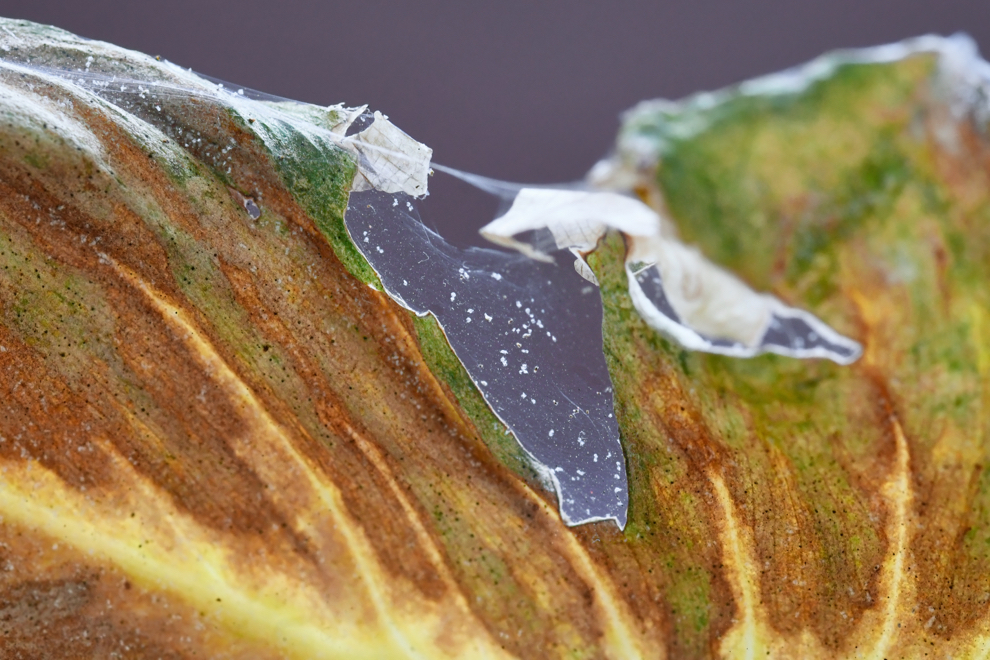
Usually trouble-free, philodendrons, like other houseplants, can be troubled by pests like scale insects, thrips and red spider mites.
Generally, philodendrons don’t suffer from diseases and are remarkably robust plants.
Propagation
As well as propagating by seed, these plants can also be propagated by means of stem tips or leaf bud cuttings.
Simply take cuttings around 15cm long.
Place these around the edges of a small pot filled with a damp but free-draining medium, using a rooting hormone to increase the chances of successful rooting.
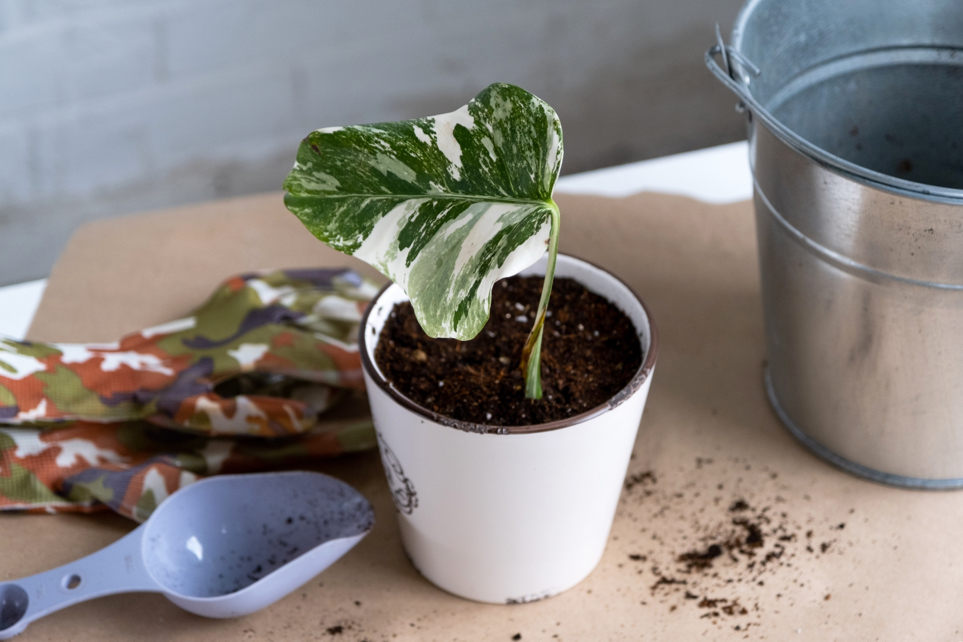
Roots should begin to develop within a few weeks.
Some philodendrons also develop small plantlets which can be removed from the main plant with the roots intact and carefully transplanted into their own separate containers.
Potting & Repotting
Philodendrons should be planted in containers just a little larger than the existing rootball.
Repot when roots start emerging on the surface of the soil and pop out through the drainage holes at the base of the pot.
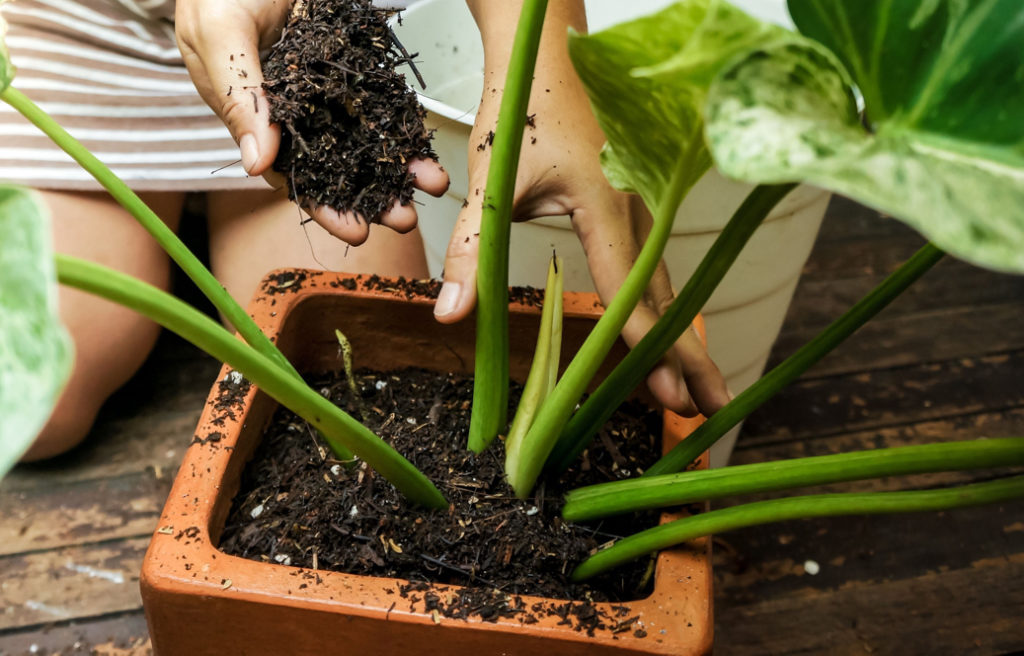
Ideally, this should be done in late spring or early summer.
Use fresh potting mix around the plant each time you do this job and, as mentioned above, you should ideally replace the medium, even if not repotting, every couple of years.
Overwintering
Philodendrons are usually grown inside your home year-round, though some of the less tender types can be placed outdoors in summer and then brought back indoors well before the first frosts.
References
- 1Loss-Oliveira, L., Sakuragui, C. M., De Lourdes Soares, M., & Schrago, C. G. (2016). Evolution of Philodendron (Araceae) species in Neotropical biomes. PeerJ, 4, e1744. https://doi.org/10.7717/peerj.1744
- 2Philodendron. (n.d.). Plants of the World Online. Retrieved July 18, 2023, from https://powo.science.kew.org/taxon/urn:lsid:ipni.org:names:326132-2#children
